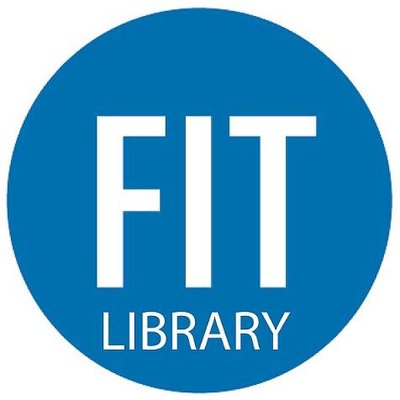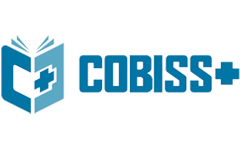Improving the Methodology for Developing Students’ Natural and Scientific Worldview (On the Example of Teaching the Subject of “The Doctrine of Evolution”)
DOI:
https://doi.org/10.61841/cs270k92Keywords:
natural and scientific worldview, higher educational institutional students, IT in education, vitagenic technologyAbstract
This article reveals how to improve the methodology for developing students’ natural and scientific worldviews in the process of teaching the subject of “The Doctrine of Evolution. The tasks of the research are following: clarifying the component and competency system of developing students’ natural and scientific worldview; improving the content of development of students’ natural and scientific worldview through a competency-based approach in the process of teaching the subject of “The Doctrine of Evolution”; improving the methodological structure of developing students’ natural and scientific worldview based on the integrative system of teaching the subject of “The Doctrine of Evolution”; identifying the didactic possibilities of developing students’ natural and scientific worldview in the process of teaching “The Doctrine of Evolution” and the facilitation technologies for preparing students to research activities; developing a set of non-standard educational and test tasks of a reproductive, productive, partly research and creative nature as well as electronic resources and educational and methodological support for developing students’ natural and scientific worldview in accordance with requirements of international assessment programs. The object of the research was the process of developing students’ natural and scientific worldview. 556 students of the National University of Uzbekistan, Andijan State University, Urgench State University, and Karshi State University were involved in the experiments.
Downloads
References
1. Abdukodirov A.A., Turaev B.Z., “Informatikavaahborottehnologijalari”
sokhasidagibulazhakmutahassiskadrlarningkasbijkompetentliginishakllantirishnazarijasivametodikasi.
Monografija. Tashkent: Navruz, 2015. – p.100.
2. Alters B. & Nelson C. Perspectives: Teaching Evolution in Higher Education. International Journal of Organic
Evolution, 56(10), 2002, pp. 1891–1901.
3. Azizhodzhaeva N.N. Pedagogicheskietehnologiiipedagogicheskoemasterstvo. – Tashknt: TGPU, 2003. – p. 192.
4. Bajborodova, T.V. Methodikaobuchenijabiologii: Posobiedljauchitelja. Moscow.: VLADOS, 2003. p. 176.
5. BegimkulovU.Sh.
Pedagogikta’limzharajonlariniahborotlashtirishnitashkiljetishvaboshkarishnazarijasivaamalijoti: Ped.fan.dok.
...diss. – Tashkent, 2007. – p.305.
6. Beketova S.I. Formirovanienauchnogomirovozzrenijauchashhihsjapriizucheniiestestvennogeograficheskih discipline. Avtoref. dis. kand. ped. nauk. – Kazan', 2008. – p. 23.
7. Berkman M. B., and Plutzer E. Defeating Creationism in the Courtroom, but not in the Classroom. Retrieved
from Academic Search Complete database. Science, 2011 331, pp. 404-405.
8. Bishop B. and Anderson C. W. Student Conceptions of Natural Selection and its Role in Evolution. Journal of
Research in Science Teaching, 1990 27, pp. 415–427.
9. Burton Ellis. Science, Religion, and the State: Teaching Evolution in the Middle East. Honor’s Thesis,
Department of Middle Eastern Studies, UC Berkeley, 2010.
10. Chaikovskij Ju. V. Jevoljucija. Knigadljaizuchajushhihiprepodajushhihjevoljuciju. Moscow.:
Centrsistemnyhissledovanij, 2003. – p. 472.
11. Clores M. A., and Limjap A. A. Diversity of Students’ Beliefs about Biological Evolution. Asia Pacific Journal
of Education, 2006 26, pp. 65–77.
12. Dem'jankov E.N. Uchebnyepoznavatel'nyezadachi v obucheniibiologii. Monografija. Orel: OGU, 2007.
p.190.
13. Dzhuraev R.H. Ta'limdainterfaoltehnologijalar. Tashkent, 2010. p. 87.
14. Elliot Sober. Conceptual Issues in Evolutionary Biology, 3rd edition, 2006. 641 p.
15. Fayzullaev S.S. Ukuvchilardagenetiktushunchalarsistemasinishakllantirishvarivozhlantirishningilmijmetodikasoslari. – Tashkent: Fan, 2005, p.133.
16. Francisco J. Ayala and John C. Avise. Essential Readings in Evolutionary Biology, 2014.
17. Gafurov A.T. Genetiko-jekologicheskie spektyjevoljucii. Avtoref. dis. ...dokt. n. v formenauchnogodoklada.
Tashkent, 1994, p. 68
18. Galeeva H.J. Stoprijomovdljauchebnogouspehauchenikanaurokahbiologii: Metodicheskoeposobiedljauchitelja.
Moscow.: «5 za znanija», 2006. – p. 144.
19. Grigor'eva L.A. Stimulirovaniestarsheklassnikov k vyborumirovozzrencheskihpozicij: Avtoref. dis.... kand. ped.
nauk. – SPb, 1998. – p. 24.
20. Jan Sapp. Genesis: The Evolution of Biology, 2003, p. 385.
21. Jergasheva G. Biologijata'limida interaktivdasturijvositalardansamaralifojdalanishnitakomillashtirish:
Pedagogikafanlaribujicha fan doktori (DSc). ... dis. – Tashkent, 2018. – p.253.
22. JuldoshevZh.G., Usmonov S.A. Pedagogiktehnologijaasoslari. Tashkent: Ukituvchi, 2004. p. p.104.
23. Köse E. Biology Students’ and Teachers’ Religious Beliefs and Attitudes Towards Theory of Evolution. H.U.
Journal of Education, 2010 38, pp. 189–200.
24. Michael P. Muehlenbein. Human Evolutionary Biology, 2010. p. 28.
25. Miller J. S., and Toth R. The Process of Scientific Inquiry as it Relates to the Creation/Evolution Controversy: I.
A serious social problem. The American Biology Teacher, 2014 76, pp. 238–242.
26. Muslimov N.A., Usmonboeva M.KH., Sajfurov D.M., Turaev A.B. Innovacionta’limtehnologijalari. Ukuvmetodikkullanma. Tashkent: TDPU, 2015, p. 208.
27. Naumova O.G. Razvitieestestvennonauchnogomirovozzrenijastudentov v universitetskomobrazovanii: Dis.
kand. ped. nauk. – Orenburg, 2008. – p. 219.
28. O’Brien D. T., Wilson D. S., and Hawley P. H., “Evolution for Everyone”: A Course that Expands Evolutionary
Theory Beyond the Biological Sciences. Evolution: Education and Outreach, 2009, 2, pp. 445–457.
29. Omonov H.T. Kimjota’liminingfalsafij-pedagogikasoslarivaunitakomillashtirishmasalalari. Ped.fan.dok. ... dis.
Tashkent: 1994, p. 265.
30. Pierre Pontarotti. Evolutionary Biology from Concept to Application, 2008, p. 216.
31. Ponomarev I.N., Solomin V.P., Sidel'nikova G.D. Obshhajametodikaobuchenijabiologii.
Uchebnoeposobiedljastudentovpedvuzov. – M.: Izdatel'skijcentr «Akademija», 2003. – p. 272.
32. Postnova N.S. Razvitiejemocional'no-cennostnogoiintellektual'nogokomponentovnauchnogomirovozzrenija u uchashhihsja v processeobuchenijabiologii: naprimerekursa "Cheloveki ego zdorov'e". Dis.... kand. ped. Nauk. – Moskva, 2010.– p. 226.
33. Ruzieva D., Usmonboeva M., Holikova Z. Interfaolmetodlar: mohijativakullanilishi – Tashkent: Nizomijnomidagi TDPU, 2013. – p.115.
34. Studies in Human Evolution—Leiden University.html; Polish Society for Human Evolution Studies 4th Annual Conference—Anthropology-News.html; Leverhulme Centre for Human Evolutionary Studies.html; Members of Lab. of Human Evolution Studies—Graduate School of Science, Kyoto University. Aviable to:
http://www.new.modernrationalist.com/2014/03/the-scientific-outlook/; www.oecd.org/edu/pisa.
35. Tolipov U.K., Usmonboeva M. Pedagogiktehnologija: nazarijavaamalijot. – Tashkent: Fan, 2005. – p. 205.
36. TolipovaZh.O., Gofurov A.T. Biologijaukitishmetodikasi. Olijukuvjurtlariuchundarslik. – Tashkent: TDPU,
2012. p. 226.
37. Tozhiev M., Zijomukhammedov B. Pedagogiktehnologija:
nazarijvaamalijukuvmashgulotlarinilojikhalashtazhribasidanmetodiktavsijanoma. – Tashkent: A.Navoijnomidagi
«UzbekistonMillijkutubhonasi», 2013, p. 64.
38. UkazPrezidentaRespubliki Uzbekistan No.UP-4947 ot 7 feralja 2017 goda «O strategiidejstvij po
dal'nejshemurazvitijuRespubliki Uzbekistan. Sobraniezakonodatel'stvaRespubliki Uzbekistan, 2017, No. 6, st.
70.
39. Wilson, D. S. Evolution for Everyone: How to Increase Acceptance of Interest in and Knowledge about Evolution. PLOS Biology, 2005, 3, pp. 2058–2065.
40. Zhuraev M., Mamatohunov M., Ibragimova G. Zamonavij tabiatshunoslik koncepcijalari. Kirgizuzbekuniversiteti. Ush. 2003, p. 178.
Downloads
Published
Issue
Section
License
Copyright (c) 2020 AUTHOR

This work is licensed under a Creative Commons Attribution 4.0 International License.
You are free to:
- Share — copy and redistribute the material in any medium or format for any purpose, even commercially.
- Adapt — remix, transform, and build upon the material for any purpose, even commercially.
- The licensor cannot revoke these freedoms as long as you follow the license terms.
Under the following terms:
- Attribution — You must give appropriate credit , provide a link to the license, and indicate if changes were made . You may do so in any reasonable manner, but not in any way that suggests the licensor endorses you or your use.
- No additional restrictions — You may not apply legal terms or technological measures that legally restrict others from doing anything the license permits.
Notices:
You do not have to comply with the license for elements of the material in the public domain or where your use is permitted by an applicable exception or limitation .
No warranties are given. The license may not give you all of the permissions necessary for your intended use. For example, other rights such as publicity, privacy, or moral rights may limit how you use the material.
















